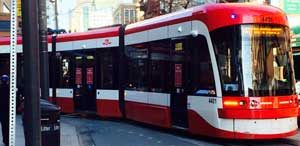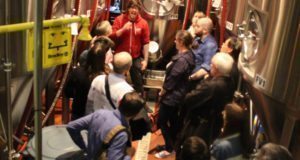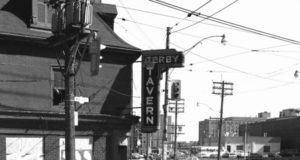By Anthony Marcusa –
If there was ever any Pan Am envy rising from the residents of Corktown, a project by an enthusiastic group of Ryerson students will likely quell it.
While the West Don Lands are abuzz with development and redevelopment projects, these students are creating their own noise around a plan for short and long term revitalization of the Corktown neighbourhood, looking to make it too an exciting destination spot in the city.
Members of the Corktown Residents and Business Association (CRBA) saw a first draft of the Ryerson initiative last month. The role the students seem to have adopted is that of a facilitator, collecting a large amount of information about services the city has to offer.
“We really don’t know ourselves what the programs are,” said CRBA member Larry Webb, who heads up the association’s development team. “It’s often difficult for us to find out who is doing what, under what conditions, and how to show interest.”
The city’s graffiti transformation, neighbourhood beautification and streetscape beautification programs are some of the services that are available to residents, but not necessarily taken advantage of or fully understood. These services allow residents to improve the area, making streets not only more pedestrian friendly, but also more attractive, adding new trees, benches, and cleaner spaces.
The well-received presentation was just the beginning for the students, who will return to the CRBA on April 13 to present a final report. The students have taken the residents’ feedback and have augmented the final report with more detail, identifying specific areas—such as Trefann St. and Tracy St.—that can be revitalized.
“One of the advantages of having students help out is that they are not jaded, and they don’t come in with preconceived notions,” explained Webb, who was excited to have the students’ involvement.
Another area the students have investigated is how to establish Corktown as a heritage area. “The first step is to designate certain buildings as heritage buildings,” explained student Rebecca Stubbs. “That designation does a lot for a community, raising property value and the esteem of residents.”
“We also want to see streets as places where people want to meet,” said Michael Floyd, one of the presenters, using the catchy phrase “Corktown Corner” to describe the future of the area. “We can reclaim orphan sites and create open spaces where people can live and play.”
At the very least, the students will provide the CRBA with an accurate and codified database of information on local services. “Our main objective is to provide information on who to contact and how to contact them,” said Floyd.
The students are working under the direction of professor Tom Ostler, who also works as a manager of policy and research in the city’s planning division. Ostler sees what the students are doing as very much resembling real life, overcoming the difficulty that people have when simply trying to obtain public information. “Some people may be skeptical,” said Ostler. “But it’s free work for them and it’s a great introduction for the students.”
The students’ findings can be applied as early as this summer. For instance, the city’s now-nebulous community event permit process will be clarified: once residents are informed as to how to organize events, the community can hope to reinstate events like the once-annual Corktown barbecue.
 TheBulletin.ca Journal of Downtown Toronto
TheBulletin.ca Journal of Downtown Toronto


